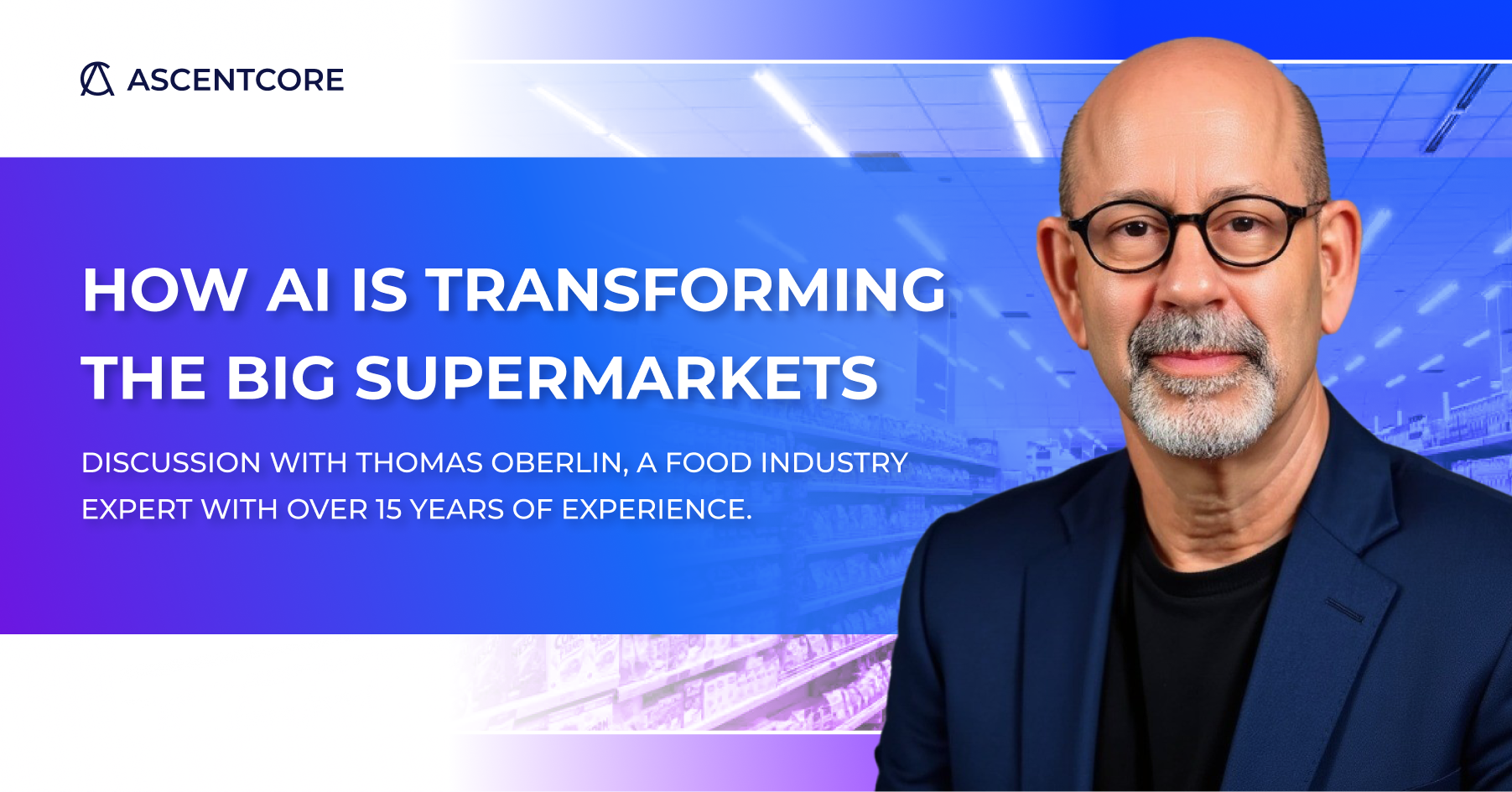Supermarkets are a cornerstone of daily life, yet they operate in a challenging environment defined by razor-thin profit margins, typically netting just 2.5% to 3%. Amid rising food prices and consumer expectations, the pressure is on to optimize operations and minimize losses, particularly in perishable goods like fruits, vegetables, and meats, which can account for 15-20% of a store’s business but often see waste as high as 40-50%.
Enter artificial intelligence (AI), a technology poised to reshape how supermarkets function by tackling these issues head-on. In a recent interview, Tom Oberlin, an industry expert collaborating with AscentCore, shared insights into how AI can drive measurable improvements in profitability and efficiency.
The Challenge: Thin Margins and Perishable Losses
With over 15 years in the food sector, Tom Oberlin has worked closely with buyers, store managers, and owners, gaining a deep understanding of their struggles. “Supermarkets are always looking for ways to improve their margins,” he explains. The stakes are high: even a small reduction in losses can significantly boost the bottom line. For instance, cutting waste in perishable categories by 20% could add more than 0.5% to a store’s net margin, a substantial gain in an industry where every fraction counts.
AI-Powered Solutions: Smarter Buying and Supply Chain Optimization
AI’s ability to analyze vast datasets, historical buying patterns, seasonal trends, and even granular details like shopping behavior before holidays, offers supermarkets a powerful tool for better decision-making.
“AI allows you to shape buying decisions based on historical data,” Oberlin notes. This means predicting demand more accurately, ensuring the right products reach the right stores at the right time.For perishables like bananas, which are notoriously prone to spoilage, AI can reduce waste by optimizing purchase quantities. For non-perishables, it prevents overstocking, those “piles of money sitting on the shelf,” as Oberlin puts it, speeding up inventory turnover and boosting profitability. By selecting reliable suppliers and aligning stock with regional or store-specific demand, AI minimizes both waste and missed sales opportunities, such as customers turning to competitors when items are out of stock.
Personalization: Connecting with Customers
AI doesn’t stop at inventory. It also enhances the shopping experience through personalization. Online, supermarkets can leverage loyalty program data to send tailored promotions or suggest alternatives based on customer preferences. In physical stores, technologies like RFID tags enable real-time offers, for example, alerting a wine enthusiast to a deal as they pass the aisle. “Supermarkets can learn what each of us consumes and present options accordingly,” Oberlin says.
Beyond promotions, AI saves time, a precious commodity for shoppers. By generating shopping lists or recipes based on past purchases, it streamlines the process. Oberlin adds, “If I can get in and out of the supermarket 30 minutes faster, that’s a huge win.”
Health-conscious consumers benefit too, with AI analyzing labels to flag items that don’t meet dietary needs, such as gluten-free or allergen-free options.
Dynamic Pricing: Maximizing Value
Dynamic pricing is another area where AI shines. For products nearing expiration, AI can determine the optimal markdown time and amount, moving beyond the guesswork of individual managers. “It’s about optimizing the return on that product,” Oberlin explains. Additionally, AI supports promotional pricing strategies, identifying which items to discount and when—like slashing prices on holiday staples to draw crowds and boost overall sales. This dual approach ensures supermarkets extract maximum value from inventory while keeping customers engaged.
A Fast Payback and Low-Risk Entry
The financial case for AI is compelling. Oberlin’s simulations suggest a payback period of less than a year, especially for high-value perishables like filet mignon, where waste carries a steep cost. “The returns on demand optimization can be significant,” he says. AscentCore sweetens the deal with a free proof of concept, requiring only selected data and minimal IT effort. “It’s a low-risk way to see the impact AI can have,” Oberlin notes, making it an attractive starting point for cautious retailers.
The Future: Efficiency and Enhanced Experiences
Looking ahead, Oberlin envisions AI expanding into staffing, transportation, and further personalization. But its immediate value lies in solving real challenges: reducing waste, optimizing inventory, and delighting customers. “AI isn’t just a buzzword—it’s a practical tool,” he emphasizes. For supermarkets aiming to thrive in a competitive, low-margin world, exploring AI with partners like AscentCore could be the key to unlocking new efficiencies and profits.
Ready to see AI in action? Visit our dedicated page, Smart Solutions for Grocery Chains, and discover how your store can benefit from AI-powered solutions.



